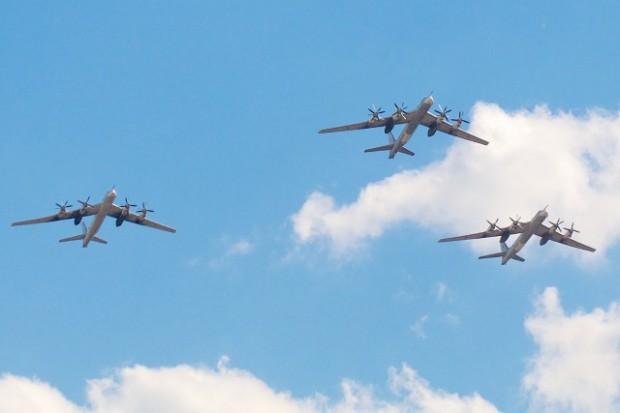This article originally appeared on AirlineReporter.com.
If it is possible to have a favorite aircraft, mine would be the Tupolev Tu-95.
The story of the Tu-95 goes back to 1944. During the Great Patriotic War, the Soviets watched with both awe and horror as the Boeing B-29 Superfortress devastated Japan. It was decided that the Air Force needed an aircraft of similar heft and range, lest the Soviets be held hostage by an American bomber gap. At the time, other than the Petlyakov Pe-8, the Soviets had limited bombing capability outside the tactical arena. Sure, they had Li-2s and obtained the occasional B-24 or B-17, but in terms of presenting a threat, there was nothing of the sort.
The Air Force went forth and tasked Andrei Tupolev and Vladimir Myasishchev to design their own heavy bombers. Little was written of Myasishchev’s “objects 202 and 302″, other than that they were similar to B-29s in many ways. Tupolev parried with something commonly referred to as “object 64.” Imagine a fatter B-29 with a twin-tail and 23mm cannon in place of 50 caliber machine guns. Was it a copy of the B-29 – absolutely not. It’s just what engineering doctrine of the time would have you do. “Object 64″ would have had a range of about 2,500 miles and a payload of about 10,000 pounds.
The designs of both Myasishchev and Tupolev progressed nicely. However, due to the exigencies of the war, sourcing the materials needed to produce any of the three designs was proving difficult. Stalin saw this. Stalin, after all, saw pretty much everything.
Now, when this decision was made is a bit of a historical question- however, it was decided that the B-29 was already the ideal strategic bomber. So, why not directly copy it?! Luckily, that same year (1944) some U.S. Army Air Corps B-29s had made emergency landings in the Soviet Far East. Due to neutrality in the Pacific Theater, the Russians impounded these aircraft. Copying them could never have been easier.
Click here to read the rest of this article at AirlineReporter.com.
Bernie Leighton has traveled around the world to learn about, experience & photograph different types of planes. Bernie will go anywhere to fly on anything. He spent four years in Australia learning about how to run an airline, while putting his learning into practice by mileage running around the world. You can usually find Bernie in his natural habitat: an airport. Follow him on Twitter @PowerToTheThird.
The post The Tupolev Tu-95, 62 Years Old & Still Going Strong appeared first on NYCAviation.
